Thinking Outside the Cubicle
13 Oct 2016
Office spaces that borrow residential design pay off in terms of creativity and the bottom line
By Kate Jonuska Very few words are as freighted with drudgery as “cubicle”—that boxy workstation that’s come to symbolize dreary offices and faceless corporations.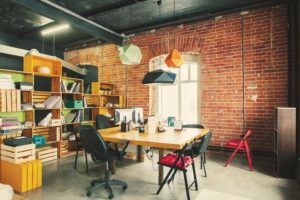
Color & Texture
Please, forget 50 shades of gray and focus on the effect colors have to set the tone of a workday. Many high-tech companies, including Google, gravitate toward energizing workplace colors, like orange, yellow, lime green and turquoise.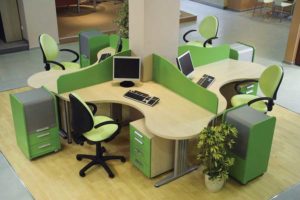
Make It Modular
“Companies are looking for creative input from their employees, rather than just wanting them to sit and answer emails all day,” Bolinger says. Therefore, just as homes have come to embrace open floor plans with mixed-use spaces, so have offices.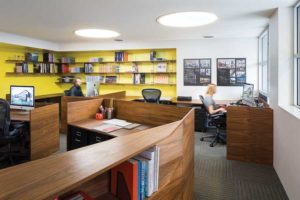
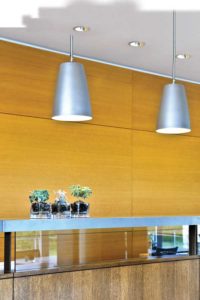
Light On
Overhead fluorescent lighting—those buzzing, flickering tubes—used to be one of an office’s worst attributes. Today, however, more offices are embracing three types of light (ambient, task and accent) normally reserved for residential design. This translates to tabletop lamps or recessed/pot lights for task lighting, and sconces, hanging pendants and even full-on chandeliers for accent lighting. “Today you can get that warm, incandescent tone of light from LEDs, more so than you can from fluorescents or even the LEDs of a few years ago,” Bolinger says. Indeed, “soft lighting similar to residential lighting is relaxing,” Hines says, “and allows better visibility of computer screens.”Good-bye Ugly Break Room
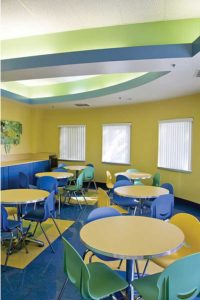
Make It Yours
The office is a place to greet customers, so “homier design is not only for the people working there, but also for people coming into the office to feel great about doing business there,” says TruDesign’s Stafford. This is especially true in the case of small businesses, she says. Her company recently redesigned an office for an ex–baseball player turned financial advisor. “We brought in some elements of who he actually was, so people got to know him on a personal level from the interior design.” Stafford’s company made displays out of bats and balls, and reupholstered the owner’s grandfather’s chair to make it a more personal space rather than a sterile financial professional’s office.












